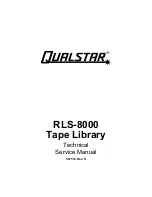
Fibre Channel link failures
When a failure occurs on a single Fibre Channel link, the small form-factor
pluggable (SFP) transceiver might need to be replaced.
The following items can indicate that a single Fibre Channel link has failed:
v
The customer's SAN monitoring tools
v
The Fibre Channel status LEDs at the rear of the node canister
v
An error that indicates that a single port has failed
Attempt each of the following actions, in the following order, until the failure is
fixed:
1.
Ensure that the Fibre Channel cable is securely connected at each end.
2.
Replace the Fibre Channel cable.
3.
Replace the SFP transceiver for the failing port on the Storwize V7000 Unified
node.
Note:
Storwize V7000 Unified nodes are supported with both longwave SFP
transceivers and shortwave SFP transceivers. You must replace an SFP
transceiver with the same type of SFP transceiver. If the SFP transceiver to
replace is a longwave SFP transceiver, for example, you must provide a suitable
replacement. Removing the wrong SFP transceiver could result in loss of data
access.
4.
Perform the Fibre Channel switch service procedures for a failing Fibre Channel
link. This might involve replacing the SFP transceiver at the switch.
5.
Contact IBM Support for assistance in replacing the node canister.
Ethernet iSCSI host-link problems
If you are having problems attaching to the Ethernet hosts, your problem might be
related to the network, the Storwize V7000 Unified system, or the host.
For network problems, you can attempt any of the following actions:
v
Test your connectivity between the host and Storwize V7000 Unified ports.
v
Try to ping the Storwize V7000 Unified system from the host.
v
Ask the Ethernet network administrator to check the firewall and router settings.
v
Check that the subnet mask and gateway are correct for the Storwize V7000
Unified host configuration.
For Storwize V7000 Unified problems, you can attempt any of the following
actions:
v
View the configured node port IP addresses by using the
lsportip
CLI
command.
v
View the list of volumes that are mapped to a host by using the
lshostvdiskmap
command to ensure that the volume host mappings are correct.
v
Verify that the volume is online by using the
lsvdisk
command.
For host problems, you can attempt any of the following actions:
v
Verify that the host iSCSI qualified name (IQN) is correctly configured.
v
Use operating system utilities (such as Windows device manager) to verify that
the device driver is installed, loaded, and operating correctly.
Chapter 5. Control enclosure
239
Summary of Contents for Storwize V7000
Page 6: ...vi Storwize V7000 Unified Problem Determination Guide Version...
Page 8: ...viii Storwize V7000 Unified Problem Determination Guide Version...
Page 10: ...x Storwize V7000 Unified Problem Determination Guide Version...
Page 18: ...xviii Storwize V7000 Unified Problem Determination Guide Version...
Page 24: ...xxiv Storwize V7000 Unified Problem Determination Guide Version...
Page 32: ...8 Storwize V7000 Unified Problem Determination Guide Version...
Page 274: ...250 Storwize V7000 Unified Problem Determination Guide Version...
Page 278: ...254 Storwize V7000 Unified Problem Determination Guide Version...
Page 296: ...272 Storwize V7000 Unified Problem Determination Guide Version...
Page 306: ...282 Storwize V7000 Unified Problem Determination Guide Version...
Page 312: ...288 Storwize V7000 Unified Problem Determination Guide Version...
Page 313: ......
Page 314: ...Printed in USA GA32 1057 04...
















































